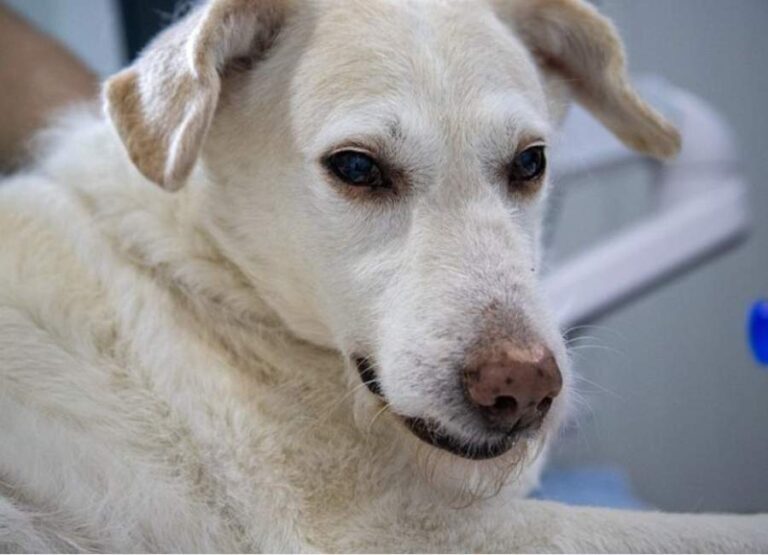11 Common Signs of Head Trauma in Dogs

Today, we’re diving into a crucial topic: signs of head trauma in dogs.
As responsible pet owners, it’s essential to be aware of the red flags that could indicate a potential injury.
So, join me as we explore the telltale signs to watch out for and ensure our furry friends stay safe and sound.
Signs of Head Trauma in Dogs
When it comes to head trauma in dogs, keep an eye out for symptoms like disorientation, loss of balance, and changes in behavior.
Also, watch for things like seizures, vomiting, or even changes in their pupils.
If you notice any of these signs, it’s important to seek veterinary care right away to ensure your furry friend gets the help they need.
Let’s break it down further…
Here are some of the most common signs of head trauma in dogs:
1. Loss of Coordination
Just like humans, dogs rely on their brains to control their movements. So, if there’s an injury to their head, it can affect their ability to walk and maintain balance.
When a dog experiences head trauma, one of the signs you may notice is a loss of coordination.
You might observe your dog stumbling, swaying, or having difficulty standing up straight.
It’s important to keep an eye out for any sudden changes in your dog’s coordination, as it could be a sign of head trauma.
2. Confusion or Disorientation
Another sign of head trauma in dogs is confusion or disorientation.
Your normally alert and responsive pup may appear dazed, have trouble recognizing familiar people or places, or seem generally out of sorts.
They might wander aimlessly or act as if they’re lost.
It’s essential to pay attention to any unusual behavior that suggests your dog is not mentally present or seems disoriented after a head injury.
3. Differences in Pupil Size
The size of a dog’s pupils can provide valuable information about their neurological health.
Following head trauma, you might notice a significant difference in the size of your dog’s pupils.
One pupil may appear larger or smaller than the other, or they may not react normally to changes in light. This condition is known as anisocoria.
If you suspect head trauma and observe such pupil abnormalities, it’s crucial to seek veterinary attention promptly.
4. Abnormal Eye Movements
Abnormal eye movements can also indicate head trauma in dogs.
You might observe your dog’s eyes twitching rapidly from side to side (known as nystagmus) or moving in an uncoordinated manner.
These abnormal eye movements can be a result of damage to the brain or the nerves controlling eye movement.
If you notice any unusual eye behaviors in your dog, it’s essential to consult with a veterinarian as soon as possible.
5. Bleeding From the Ears or Nose
Bleeding from the ears or nose can be an alarming indication of head trauma in dogs.
It may result from a severe impact or injury to the head. This bleeding can be a sign of a serious condition such as a skull fracture or internal head injury.
If you notice any bleeding from these areas, it’s critical to seek immediate veterinary attention to assess the extent of the injury and provide appropriate care.
6. Lethargy or Sleepiness

Lethargy or excessive sleepiness in dogs following a head injury can be a concerning sign.
While dogs may naturally rest after physical exertion, a notable and persistent decrease in energy levels, motivation, or responsiveness could indicate a neurological issue.
It’s important to monitor your dog’s behavior closely and seek a professional evaluation if you observe prolonged lethargy or unusual sleepiness, especially after a head trauma.
7. Rigid or Flaccid Limbs
Changes in limb movement, such as rigidity or limpness, can signal neurological impairment due to head trauma.
Stiffness or rigidity in the limbs may indicate muscle tension or spasticity, while limpness could suggest weakness or loss of muscle tone.
These changes may be accompanied by other neurological symptoms and should prompt immediate veterinary assessment to determine the extent of the injury and provide appropriate care.
8. Seizures
Seizures are a serious manifestation of head trauma in dogs and require urgent medical attention.
Seizure activity can present as uncontrolled convulsions, abnormal movements, or loss of consciousness.
Following a head injury, the occurrence of seizures can indicate significant neurological involvement and necessitates immediate veterinary intervention to address the underlying cause and provide necessary treatment.
9. Changes in Eating or Drinking Habits
When a dog experiences head trauma, it can affect their appetite and drinking habits.
You may notice that your dog has a decreased or loss of appetite. They may refuse to eat their regular meals or show disinterest in their favorite treats.
Additionally, they may drink less water than usual or avoid drinking altogether. On the other hand, some dogs may exhibit excessive thirst due to the trauma.
It’s important to monitor your dog’s eating and drinking habits as sudden changes can be indicative of head trauma.
10. Loss of Interest in Play or Activities
Head trauma can have a significant impact on a dog’s behavior and energy levels.
If your dog has suffered a blow to the head, they may display a loss of interest in their favorite activities, such as playing fetch, going for walks, or interacting with toys.
They may become lethargic, seem unusually tired, or withdraw from social interactions.
It’s important to pay attention to any sudden changes in your dog’s behavior and consult a veterinarian if you notice a prolonged loss of interest in activities they once enjoyed.
11. Changes in Breathing Patterns
Alterations in a dog’s breathing pattern can also be an indication of head trauma.
You might observe irregular or labored breathing, such as rapid or shallow breaths, or your dog may struggle to catch their breath.
They may also exhibit wheezing, coughing, or make unusual sounds while breathing.
These changes can be a result of damage to the respiratory system caused by the trauma.
If you notice any abnormalities in your dog’s breathing, it’s crucial to seek immediate veterinary attention.
Learn more about the signs of emotional trauma in dogs.
Related Questions
What are the common signs of head trauma in dogs?
When a dog experiences head trauma, you might notice symptoms like loss of consciousness, disorientation, seizures, abnormal eye movements, or bleeding from the ears or nose. It’s crucial to seek veterinary care immediately if you suspect your dog has suffered head trauma.
Can head trauma in dogs cause changes in behavior?
Yes, head trauma can lead to changes in a dog’s behavior. They might become more irritable, anxious, or exhibit unusual aggression. On the other hand, they could also become lethargic or lose interest in activities they once enjoyed.
What should I do if I suspect my dog has suffered head trauma?
If you suspect your dog has experienced head trauma, it’s essential to remain calm and carefully transport them to the nearest veterinary clinic. Avoid moving the dog unnecessarily and try to keep them as still as possible to prevent further injury.
Are there any long-term effects of head trauma in dogs?
Head trauma can have long-term effects on a dog’s health, including cognitive impairment, ongoing seizures, and changes in behavior. It’s crucial to follow your veterinarian’s recommendations to manage and monitor any potential long-term effects.
Can head trauma in dogs be prevented?
While accidents can happen, there are measures you can take to minimize the risk of head trauma in dogs. Keep them on a leash during walks, secure them in a car with a seatbelt or in a crate, and ensure your home environment is free of potential hazards.
How is head trauma in dogs diagnosed and treated?
Veterinarians diagnose head trauma in dogs through physical examination, neurological assessment, and imaging such as X-rays or CT scans. Treatment may include stabilizing the dog, managing any bleeding or swelling, and providing supportive care to aid in their recovery.
Conclusion
In conclusion, it’s crucial to be vigilant for signs of head trauma in our furry friends. Remember, if you notice any sudden changes in behavior, such as disorientation, loss of balance, or seizures, it’s important to seek veterinary care immediately. By staying alert and taking swift action, we can ensure our beloved dogs receive the care they need to recover and thrive.






